When at the end of the XIX century German engineer and designer August Horch organized the company under the name “Horch & Co.”, he could not even think that after one hundred years of his brainchild will become one of the leaders of the world car industry. And it could not be otherwise, because the German’s great love for cars and thirst for invention pushed him to create his first car.
How it all began
In 1899 a small production with a staff of 11 persons opens near Cologne, Germany. That’s where the history of Audi began. The first car “Horch & Co.” saw the light a year later, in 1900. It was a car with a two-cylinder engine with an output of only 4-5 HP, which develops a speed of 60 km/h. According to that time, the first Horch model was not so bad: a rear-wheel-drive car on the belt with the front-engine, but the main thing that Horch’s brainchild had was a transmission connected with the main gear.
The business was booming, the company’s staff was growing, and in two years there were already 90 people working at the company. The company found investors who were ready to invest in the rapidly growing automobile industry. This helped to expand production.
In 1902, a more powerful two-cylinder engine was produced, but with a Cardan shaft. Thanks to additional investments and expansion of the authorized capital in 1903 the plant moved to Zivikkau and produces the fourth model with a 2600 cm3 engine and three-speed gearbox, which at that time fully satisfied the needs of customers. Developers were delighting their fans with new products every year, improving earlier developments. But to make a name for themselves, they needed advertising. And racing became the best way to realize it.

For Horch & Co. it was a failure because the car that participated in the races failed. The shareholders offered Horch to resign as head of the company, which he had created and managed production for 10 years.
History of the Audi brand
A man with a heart of an engineer could not stay away and already in 1909 opened a new factory, taking on this 200 thousand marks. With the name did not bother and again decided to use his own name. However, former partners sued the German engineer for plagiarism. We had to look for another variant, and the son of one of his colleagues, who played the main role in the history of the Audi name, came to the aid. The boy, who had studied Latin, immediately caught the connection between the car manufacturer’s last name and the Latin word “Audi” (derived from “audire”): it was “listen” and became “listen”. Horch liked the redistribution of accent due to the imperative inclination of the verb, and the new company was registered under this name. The first car under the Audi brand came out in 1910 and was branded “A”.
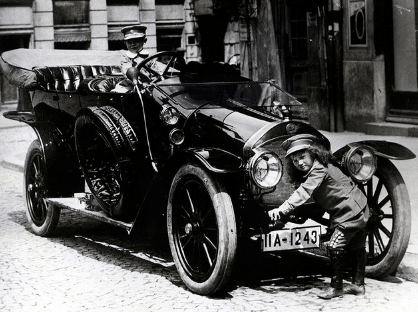
New products came out every year, old models were upgraded, and Horch’s cars were more and more often entered in races. The success lasted for almost 20 years until the Great Depression hit Europe and the company was on the verge of bankruptcy. In 1928, the company was acquired by DKW but keeping the original logo. In general, the new owner had no claim to cars, because his goal was motorcycles. A year before that, a high-tech car Audi Type R with the power of 100 horses, which could reach 100 km/h, came off the assembly line. The second name of the model R was “Imperator” with the aim of uniqueness. History of the Audi logo
The history of the Audi logo has to do with the lender to the auto industry, the Saxon Municipal Bank. In order not to lose its funds in the midst of the global crisis, it forced the companies Audi, Horch, Wanderer, and DKW to merge. Thus, the company Auto Union AG was born, the logo of which was a four-ring symbol of equal cooperation between the four companies. Each brand in the new association had its place: Audi specialized in sports cars, Horch in premium-class cars, DKW remained loyal to the motorcycles, and Wanderer began to develop mid-level cars. During the 7 prewar years, two new models were produced, and in 1937 the production of Horch 901 began.
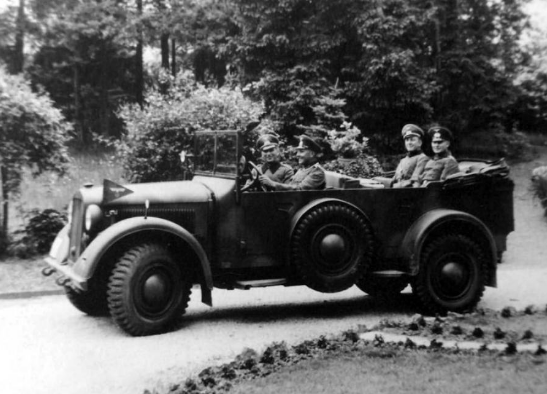
And then war broke out, which by its end almost completely destroyed the Saxon factories. The Auto Union management takes the surviving equipment to Bavaria and opens the first spare parts warehouse in Ingolstadt. Production of the new car had to be forgotten until 1950. That was when the first post-war DKW F89 P Master Class came off the assembly line. The company was literally afloat, experiencing financial difficulties, so in 1958 it goes under the control of Daimler-Benz, and since 1964, the history of Audi has continued within the Volkswagen concern. The new management decided to keep the brand, which eventually played a key role in the history of Audi, as from 1949 to 1965, all developments of engineers were made under the brand DKW and NSU.
Audi’s new history
Volkswagen kept the company name but did not want to develop it independently. New production facilities were planned to be used only for the production of the flagship Beetle at that time. The chief designer of the absorbed Auto Union, Ludwig Kraus, seeing how the automobile world was developing, decided to secretly develop an innovative model. Thus, the legendary Audi 100 with the trademark four rings on the radiator grille was born. A special feature was its water-cooled engine located in front because, at that time, most models were built with a rear-mounted engine and the use of air cooling technology. We can say that the brainchild of Kraus allowed Volkswagen to assert itself with renewed vigor.
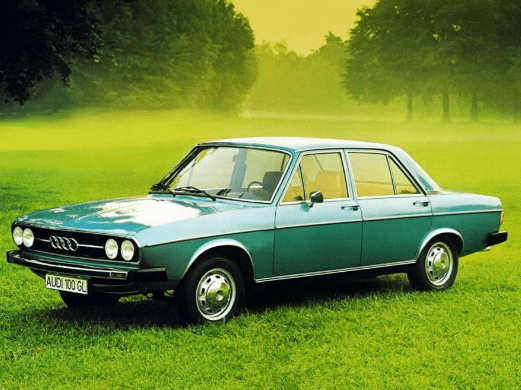
At first, these were four- and two-door sedans, as well as the Audi 100 in coupe form, which was produced on the C1 platform and was equipped with four-cylinder 1.8-liter engines. In April 1970, an automatic transmission was introduced in Ingolstadt’s automotive history. In 1973, the model was restyled, putting not only a more powerful engine but also changed the design. Since 1970, the brand conquered the U.S., which shipped Audi Super 90 and Audi 80, which later received its own label in the States – 5000 and 4000, respectively.
Market conquest
In 1974, Ferdinand Piech becomes chief designer, after whom the subsequent years of the company’s development are called the “Piech Era”. It is under his leadership that the management chooses offensive tactics as the only possible way to conquer the world market of the car industry. In 1976 Piech developed a five-cylinder engine, in 1979 it appeared a turbocharged engine with a working volume of 2.2 and 200 hp, and in 1980 at the Geneva Motor Show was presented Audi Quattro with all-wheel drive technology which Audi had been working on since 1976. Before that all-wheel drive was used only on trucks, so the appearance of a sports coupe with excellent stability on ice and snow has caused a storm of emotions among experts.

A new milestone in the development of the automobile industry in Germany began. At first, all-wheel-drive cars were rally cars, and since 1982 the company began production of the Audi 80 Quattro. Thanks to all-wheel-drive technology, the Four Rings were undoubted leaders in the WRC championship during 1982-1987. This allowed the company to build up its power and assert itself as an independent automaker.
Creation of the concern
The next leap in development came in 1985, when Audi AG, headquartered in Ingolstadt, appears on the register of the Federal Republic of Germany. Technologies have been developing rapidly: the aerodynamics of the body is improved, turbocharged gasoline and economical diesel engines are used, the hybrid drive appears. The introduction of new technologies continues not only on sports cars but also on the general market cars which change the perception of modernity are released. In the same year, the badge of Audi changes: four rings are returned, under which the name of the brand is written in large letters; before that, since 1969, the official logo was a black oval with Audi written inside it.
In 1986, the Audi 80 B3 is released. It was the first mid-sized car with a fully galvanized body, developed on its own platform. Earlier the 80 series was based on the same platform as the Volkswagen Passat. The safety system was fundamentally new: as an alternative to the usual airbags, the new cars were produced with the Procon-ten function.
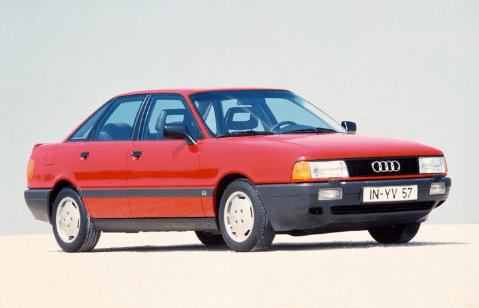
1993 is considered the beginning of the corporation when the Audi Group included the Hungarian and Brazilian production, and then Cosworth (Britain), which produced engines for racing cars, the Italian Automobili Lamborghini, the Spanish Seat. The decision to split VW and Audi was made by the same Ferdinand Piech, then head of the concern.
Newest history
The cars produced before could not meet the market demands, so Piech decided not only to restyling but also to develop two new models at once. Instead of Audi 80 and 100, the A4 and A8 appear, and hatchback A3 and business sedan A6 roll off the assembly line. Remaining faithful to the company’s main principle, which is to observe high technology, engineers work on the creation of an executive-class car equipped with a diesel engine. In 1997, they launched the A8, which for the next seven years was destined to become the only diesel-powered car in its class.
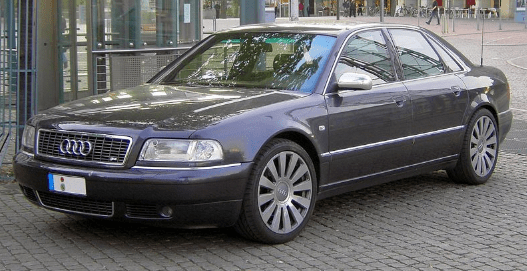
New engines were developed, mass production of cars with all aluminum bodies began, and the design and technical capabilities of cars were improved. All this allowed the Audi Concern to become a leader in the European car industry in the early 2000s. If in 2000 653,000 cars were sold, in 2008 this figure was already 1003,000. Traditionally, German cars were sold in its region, and the statistics said about increased interest to this brand in the East. Only in China in 2009, 108,000 cars were sold out of a total flow of 705,000 cars into this country. During the same period the history of Audi rings was developing: feeling its power, the leadership decides to change the logo, making the rings volumetric, and the brand name more strict and laconic.
Audi’s financial strength allowed the company to become a major contributor to parent concern Volkswagen. Despite the wide range of cars it produces, it is still part of a group focused on sports car development, with Lamborghini and SEAT also participating.
Struggle with the competition
In 2006 a clear advertising war between Audi and BMW began. Prerequisites for confrontation started in the 80s when in one of the commercials Audi’s new car was making an audacious figure eight around competitors’ cars. BMW responded to this insult with a new 5-Series commercial featuring a ploy to dissolve competing cars into thin air. In 2003, BMW made the second attempt to annoy Mercedes: the poster appeared which showed the new X5 painted as a leopard chasing a zebra-covered Mercedes ML. This time, there was an immediate response: a poster showing a Mercedes tractor pulling a new BMW and the caption “Mercedes can be fun to drive, too”.
It didn’t work out with that competitor, so BMW took on Audi again, a battle that hasn’t subsided to this day. The beginning seemed to be good-natured: congratulating Audi on winning the competition, but it was done with a challenge. An advertising poster of the new car from BMW with the caption: “Auto of the Year 2006 in South Africa” from the winner of the “Auto World 2006” contest. An altercation ensued, resulting in a new billboard from Ingolstadt; next to the image of the chic black sports car is the caption “Our congratulations to BMW for winning the Auto World 2006 competition from the six-time winner of the Le Mans 24 Hour (2000-2006)”.
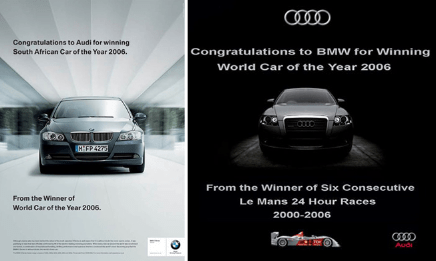
The marketers of the opposing sides keep track of every novelty of the competitor, not forgetting to lunge ahead of them. As a response to changes in the language version of Audi’s navigator, BMW issued the phrase: “While someone is working on translations, others are developing engines. Ingolstadt has answered with a hint that Bachs do not have an all-wheel-drive system, but in response received not quite an original response in the form of a poster with a broken Audi because of the Quattro system. The game, reminding a chess duel began. Even in-network battles between fans of two concerns unfolded. This advertising war plays a big role for both auto giants, in fact, not only the experts but also the general public is waiting impatiently for what one will surprise the other.
Sports history
The beginning of a racing tradition back in the 30’s August Horch, but up to the 70’s cars “Four Rings” was the middle segment among the competitors. The turning point was 1980 when the Audi Quattro appeared on the track for the first time. Experts predicted its failure because all-wheel drive passenger car was too heavy for high speeds. However, the Quattro shattered all stereotypes and allowed the team to be leaders for a long time. In 1981, German autopilots Michelle Mouton and Fabrizia Pons became the first women to win a world rally.

In 1984, the Quattro Sport made its debut at races in Monte Carlo and Sweden. This season, no one could keep up with the novelty, so the grand prize went to the German team. But in 1985, the new Peugeot 205 took to the track and beat the last year’s champion. Be that as it may, the Quattro Sport S1 with Hannu Mikkola, Stig Blomquist, Walter Röhrl, and Michel Mouton at the wheel was the starting point of the high-tech sports car industry.
In 1988 the team tried its hand in racing in America, where it won 5 stages out of 13. The next year it was decided to return to Europe and conquer its roads. The triumph was 1996 when the Germans won all the Gran Turismo series in Europe.
1999 was the debut in the endurance racing, Le Mans. Over the next 17 years, the Germans have taken more than 100 awards, participated in 186 races. Outstanding for the series was 2006 when the Audi R10 TDI diesel was entered as a competitor for the first time, ultimately winning the day-long marathon. In 2012, the European race was won by the hybrid R18 TDI e-tron Quattro.
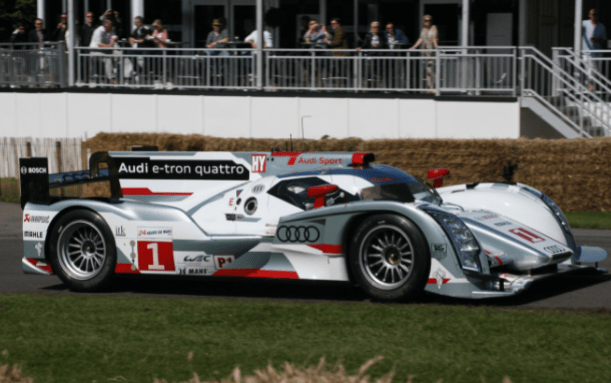
In 2016 the era of Le Mans for Audi is over, but the team traditionally continues to participate in DTM races. It is not always a success: in the last 15 years, there have been seven gold medals and 19 prizes.
The “Formula E” championship, which started in 2014, involves the participation of environmentally friendly cars. Audi claimed its e-tron electric car for the race and won 2nd place with it in 2018.
Production facilities
Audi’s main plants are located in Ingolstadt and Neckarsulm, cities where the first cars were still produced. After the accession of Seat to the concern, production in Bratislava was taken over by the Germans. Also working plants in Belgium, Spain, Hungary, India, China, Indonesia, in 2012 was started the first North American production in Mexico capacity of 150 thousand cars a year. In total, the concern owns 17 production sites in 13 countries around the world.
Over the years, the company has grown from 11 to 85 thousand people.
Models are updated, environmentally-friendly vehicles are produced, and the “Power and Quality” principle laid down by August Horch is still valid today and is the driving force behind the success of the concern.

